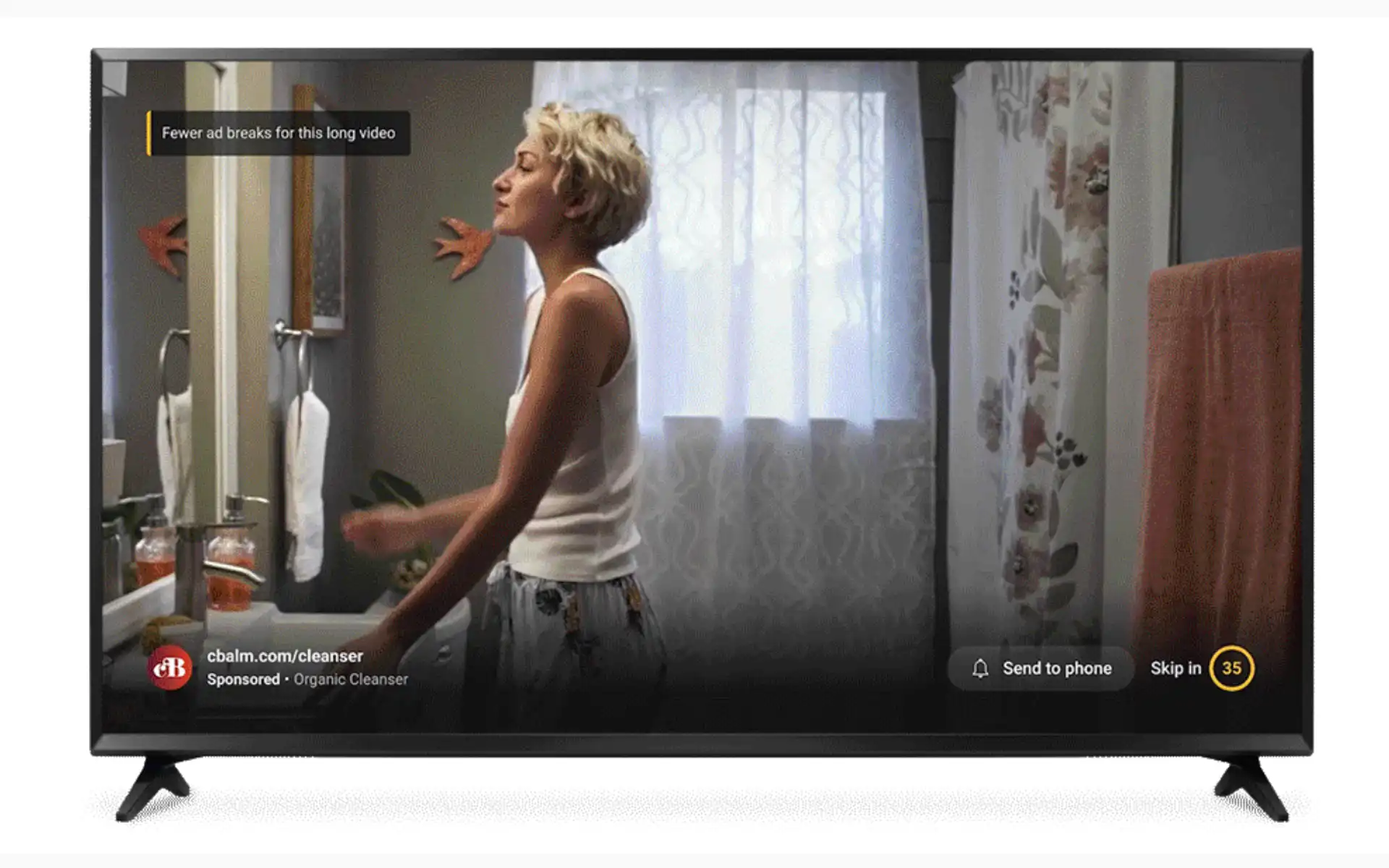YouTube expands fewer, longer ad breaks on CTVs for better viewing
YouTube's updated ad strategy aims to reduce interruptions and increase viewer engagement on connected TVs.

YouTube announced an expansion of its fewer, longer ad breaks strategy for connected TV (CTV) viewers, aiming to enhance the user experience while maintaining effective advertising opportunities. This update, which builds upon a feature initially launched in 2018, addresses viewer preferences for less frequent interruptions during long-form content consumption on television screens.
According to Romana Pawar, Director of Product Management for YouTube Ads, the decision to expand this feature stems from user research indicating that 79% of viewers prefer video advertisements to be grouped together rather than distributed throughout a video. This statistic, derived from a Google/YouTube via Qualtrics Deep Ad Pod Messaging Survey conducted in August 2022, underscores the importance of minimizing disruptions to viewer engagement.
The expanded implementation of fewer, longer ad breaks on CTV platforms has yielded significant results. YouTube reports that streamers can now experience 50% longer viewing sessions before encountering their next ad break. This improvement in the viewing experience is expected to contribute to increased content consumption and overall user satisfaction.
Central to this update is the concept of ad pods, which YouTube first introduced in 2018. Ad pods are sets of two advertisements served back-to-back, designed to reduce the frequency of interruptions during longer viewing sessions. The initial implementation of ad pods resulted in up to 40% fewer interruptions for viewers who engaged with multiple ads in a single break.
The latest expansion of the ad pod strategy introduces several key features and considerations. Viewers on connected TVs retain the ability to skip to the next advertisement within an ad pod after the first five seconds, providing a level of control over their ad experience. When a viewer chooses to advance to the next ad, the timer for the ad pod reduces, and upon reaching zero, the viewer can skip directly to their desired content.
From an advertiser's perspective, this update offers increased opportunities to connect with target audiences while minimizing disruptions to viewing sessions. The longer, consolidated ad breaks potentially provide a more captive audience, as viewers are less likely to disengage during a single, longer break compared to multiple shorter interruptions.
It's important to note that this update requires no action from advertisers. The implementation is managed entirely on YouTube's end, reflecting the platform's ongoing efforts to balance user experience with advertising effectiveness.
The expansion of fewer, longer ad breaks on CTV platforms represents a continuation of YouTube's strategy to adapt to evolving user patterns and preferences. In June 2021, Tript Singh Lamba, at the time Director of Product Management at YouTube, highlighted the platform's commitment to reducing viewer interruptions while helping advertisers connect with their most important audiences. This commitment has led to ongoing refinements in YouTube's advertising approach, including the expansion of ad pod eligibility to include non-skippable in-stream ads in addition to skippable in-stream ads and bumpers.
The focus on connected TV platforms is particularly notable given the increasing prevalence of CTV viewing. As more consumers shift their video consumption habits from traditional broadcast and cable television to streaming services, platforms like YouTube are adapting their advertising strategies to suit this new viewing environment. The CTV space presents unique challenges and opportunities for both content providers and advertisers, necessitating innovative approaches to ad delivery and user experience optimization.
YouTube's decision to expand its fewer, longer ad breaks strategy aligns with broader industry trends towards less disruptive advertising models. Streaming platforms across the board are experimenting with various ad formats and delivery methods to balance revenue generation with user satisfaction. YouTube's approach, which emphasizes reduced frequency of interruptions, appears to be resonating with viewers based on the reported engagement metrics.
The technical implementation of this update likely involves sophisticated algorithms that determine optimal placement and timing of ad pods based on factors such as content length, viewer behavior, and advertiser requirements. While the specific details of these algorithms are not publicly disclosed, the result is a more tailored advertising experience that adapts to individual viewing sessions.
One potential challenge of this approach is ensuring that advertisers receive adequate exposure and engagement despite the reduced frequency of ad breaks. However, the reported increase in viewing session length suggests that this strategy may actually benefit advertisers by presenting their messages to more engaged viewers.
As the digital advertising landscape continues to evolve, YouTube's focus on user experience in conjunction with advertising effectiveness demonstrates the platform's commitment to long-term sustainability. By prioritizing viewer preferences and engagement, YouTube aims to create an environment where both content creators and advertisers can thrive.
The impact of this update extends beyond just the viewer and advertiser relationship. Content creators on YouTube may also benefit from increased viewer engagement and longer watch times, potentially leading to improved monetization opportunities and greater audience retention.
Key facts about YouTube's expansion of fewer, longer ad breaks on connected TVs
Announced on August 14, 2024
Expands upon a feature initially launched in 2018
Based on research showing 79% of viewers prefer grouped advertisements
Results in 50% longer viewing sessions before the next ad break on CTV
Maintains viewer ability to skip ads after five seconds
Requires no action from advertisers
Builds upon the concept of "ad pods" introduced in 2018
Aligns with broader industry trends towards less disruptive advertising
Aims to balance user experience with advertising effectiveness

